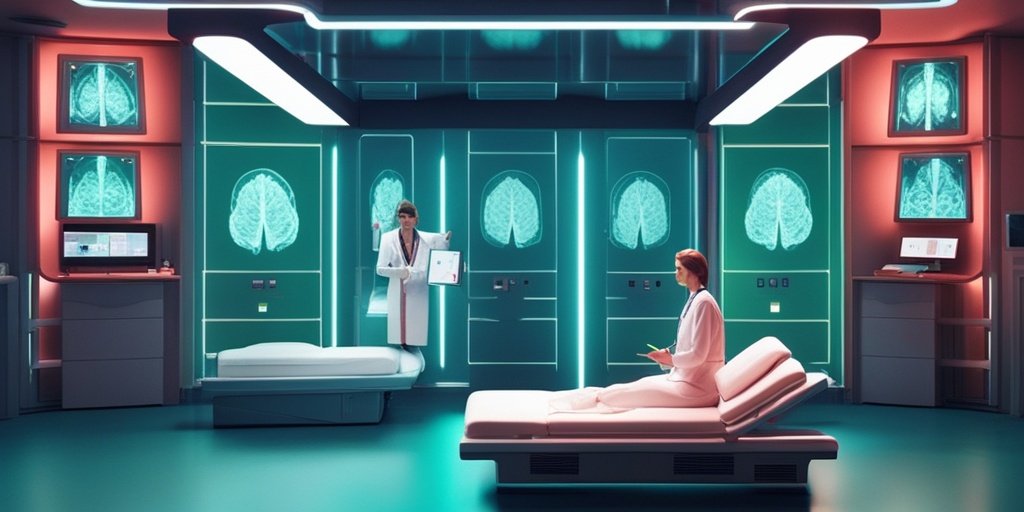⚡ Quick Summary
This article reviews the latest advancements in neuro-prognosticative tools for predicting outcomes in patients suffering from hypoxic-ischemic encephalopathy (HIE) due to cardiac arrest. The integration of artificial intelligence and machine learning is highlighted as a promising approach to enhance these predictive capabilities.
🔍 Key Details
- 📊 Condition: Hypoxic-ischemic encephalopathy (HIE) induced by cardiac arrest (CA)
- 🧩 Tools reviewed: Mainstream neuro-prognosticative tools
- ⚙️ Technologies: Artificial intelligence, big data, machine learning
- 🏆 Recommendations: Comprehensive use and repeated assessments of tools
🔑 Key Takeaways
- 🧠 HIE is a challenging condition requiring careful prognostic evaluation.
- 💡 Neuro-prognosticative tools are essential for assessing potential neurological recovery.
- 🤖 AI and machine learning can significantly enhance the predictive accuracy of these tools.
- 📅 Continuous assessment is recommended for better understanding of patient conditions.
- ⚖️ Decision-making should consider medical history and clinician experience.
- 🌐 Study emphasizes the importance of integrating technology in clinical settings.

📚 Background
Hypoxic-ischemic encephalopathy (HIE) is a serious condition that arises when the brain is deprived of oxygen and blood flow, often due to cardiac arrest. This situation poses a significant challenge for healthcare providers and families, as they must navigate the difficult decision of whether to continue life-sustaining treatments or withdraw them. Understanding the potential for neurological recovery is crucial in these scenarios.
🗒️ Study
The authors, Zeng and Asakawa, conducted a comprehensive review of existing neuro-prognosticative tools used to evaluate patients with HIE. They emphasized the need for a thorough understanding of the patient’s pathophysiological state and the importance of repeated assessments to inform clinical decisions. The study also advocates for the incorporation of novel technologies such as artificial intelligence and machine learning to improve prognostic evaluations.
📈 Results
The study highlights that the effective use of neuro-prognosticative tools can lead to better-informed decisions regarding patient care. By leveraging advanced technologies, clinicians can achieve a more accurate assessment of a patient’s potential for recovery, ultimately guiding treatment options and improving patient outcomes.
🌍 Impact and Implications
The integration of AI and machine learning into neuro-prognosticative tools represents a significant advancement in the management of patients with HIE. This approach not only enhances the accuracy of predictions but also supports clinicians in making more informed decisions, potentially leading to improved patient care and resource allocation in healthcare settings.
🔮 Conclusion
This study underscores the critical role of neuro-prognosticative tools in managing hypoxic-ischemic encephalopathy. By embracing innovative technologies, healthcare professionals can enhance their predictive capabilities, leading to better patient outcomes. The future of patient care in this area looks promising, and further research into these technologies is encouraged.
💬 Your comments
What are your thoughts on the use of AI and machine learning in predicting outcomes for patients with HIE? We invite you to share your insights and engage in a discussion! 💬 Please leave your comments below or connect with us on social media:
Updated information on neuro-prognosticative tools to predict outcomes for patients with hypoxic-ischemic encephalopathy induced by cardiac arrest.
Abstract
Hypoxic-ischemic encephalopathy (HIE), caused by cardiac arrest (CA) is a refractory condition in clinical settings. The clinician and family members have to make a hard decision: continue expensive life-sustaining therapy or withdraw the expensive intervention. The core problem lies in “whether this patient can still be awakened and achieve neurological recovery”. This study briefly summarizes the use of mainstream neuro-prognosticative tools thus far with the latest available evidence. To gain a better understanding of the pathophysiological state of patients with HIE, comprehensive use of these tools and repeated assessments are recommended. The final decision should be made cautiously and comprehensively in light of the patient’s medical history, pathophysiological state, results of neuro-prognosticative evaluations, and the clinician’s clinical experience per se. Novel computerized technologies such as artificial intelligence, big data, and machine learning should be used to develop neuro-prognosticative tools for refractory CA-induced HIE.
Author: [‘Zeng H’, ‘Asakawa T’]
Journal: Intractable Rare Dis Res
Citation: Zeng H and Asakawa T. Updated information on neuro-prognosticative tools to predict outcomes for patients with hypoxic-ischemic encephalopathy induced by cardiac arrest. Updated information on neuro-prognosticative tools to predict outcomes for patients with hypoxic-ischemic encephalopathy induced by cardiac arrest. 2024; 13:199-202. doi: 10.5582/irdr.2024.01060